East Africa is a mosaic of spectacular landscapes, diverse wildlife, and rich cultural heritage.
From the iconic savannahs of the Serengeti to the lush forests of Uganda and the pristine beaches of Zanzibar, this region offers an array of experiences that cater to every traveller’s desires. Here are the top destinations to explore in East Africa.
1. Serengeti National Park, Tanzania
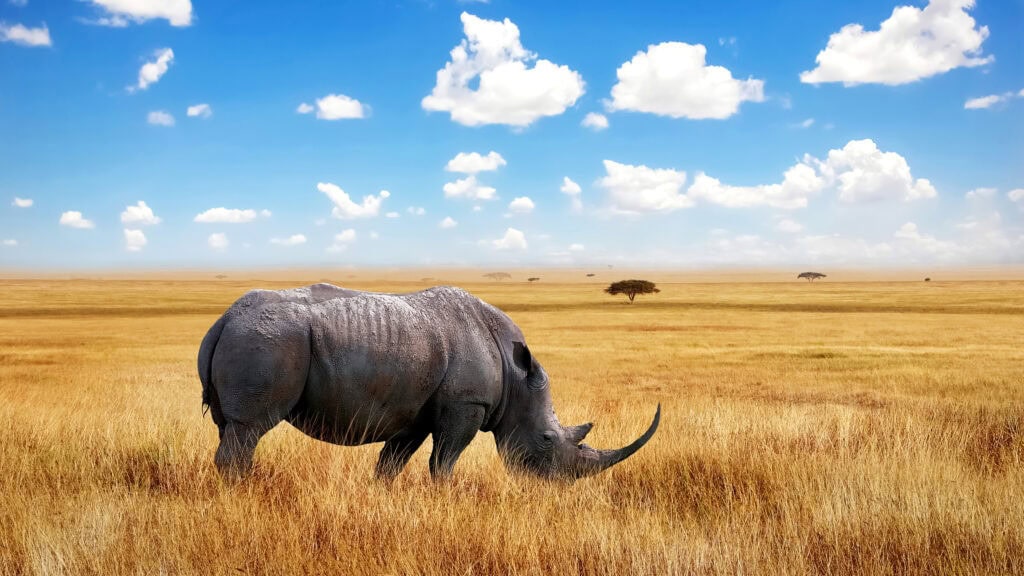
The Serengeti is synonymous with safari and is one of Africa’s most celebrated wildlife reserves, covering approximately 14,750 square kilometres.
Famous for the Great Migration, the park’s endless plains are home to an incredible array of wildlife, including over 70 large mammal species and 500 bird species. Thrilling game drives, hot air balloon safaris, and the Serengeti Visitor Centre provide insights into the park’s ecology. The Kopjes, rocky outcrops, serve as vantage points for predators.
- Unique Facts: The Serengeti hosts the largest terrestrial mammal migration in the world, involving over 1.5 million wildebeest and 250,000 zebras.
2. Maasai Mara National Reserve, Kenya

Adjoining the Serengeti, the Maasai Mara is renowned for its exceptional populations of lions, leopards, and cheetahs, and the annual migration of wildebeest and zebras.
Spanning 1,510 square kilometres, the reserve also hosts over 95 species of mammals and 570 recorded bird species. Cultural tours with the Maasai people and luxury camping experiences add to its allure. The Mara River offers dramatic views of river crossings during the migration.
- Unique Facts: The Maasai Mara is named after the Maasai people and the Mara River, which traverses the reserve.
3. Ngorongoro Crater, Tanzania

A UNESCO World Heritage Site, the Ngorongoro Crater is the world’s largest inactive volcanic caldera, spanning 260 square kilometres with a depth of 610 metres. This haven for wildlife offers spectacular scenery. The crater floor teems with hippos, elephants, and a variety of bird species, while the Olduvai Gorge reveals rich archaeological history.
- Unique Facts: The crater supports a dense population of wildlife, including a resident population of over 25,000 large animals.
4. Bwindi Impenetrable Forest, Uganda

This UNESCO World Heritage Site covers 321 square kilometres and is known for its gorilla trekking experiences, providing one of the most poignant wildlife encounters in Africa. Dense forests house mountain gorillas, chimpanzees, and colobus monkeys, with Buhoma Village offering cultural insights. Bwindi also features over 200 species of butterflies and 350 bird species.
- Unique Facts: Bwindi is home to almost half of the world’s mountain gorillas and offers a sanctuary for many other species.
5. Mount Kilimanjaro, Tanzania

Africa’s highest peak, Mount Kilimanjaro, rises to 5,895 metres and is a bucket-list destination for trekkers and adventurers. The mountain’s slopes host unique flora and fauna, including the Kilimanjaro tree hyrax, and the trek to the summit passes through five distinct climate zones.
- Unique Facts: Kilimanjaro’s unique geography includes five distinct climate zones, from tropical rainforest to arctic summit.
6. Amboseli National Park, Kenya

Stunning views of Mount Kilimanjaro and large elephant herds characterise Amboseli, which spans 392 square kilometres. The park’s swamps attract a variety of birdlife, including pelicans and kingfishers, with Observation Hill offering panoramic vistas.
- Unique Facts: Amboseli is one of the best places in Africa to get close to free-ranging elephants.
7. Volcanoes National Park, Rwanda

Renowned for its mountain gorilla population and cultural history linked to Dian Fossey, this park covers 160 square kilometres of lush, mountainous landscape hosting a variety of bird species and opportunities for golden monkey tracking and volcano hikes.
- Unique Facts: Volcanoes National Park is part of the Virunga Conservation Area, spanning three countries and housing a significant number of the world’s gorillas.
8. Lake Nakuru National Park, Kenya
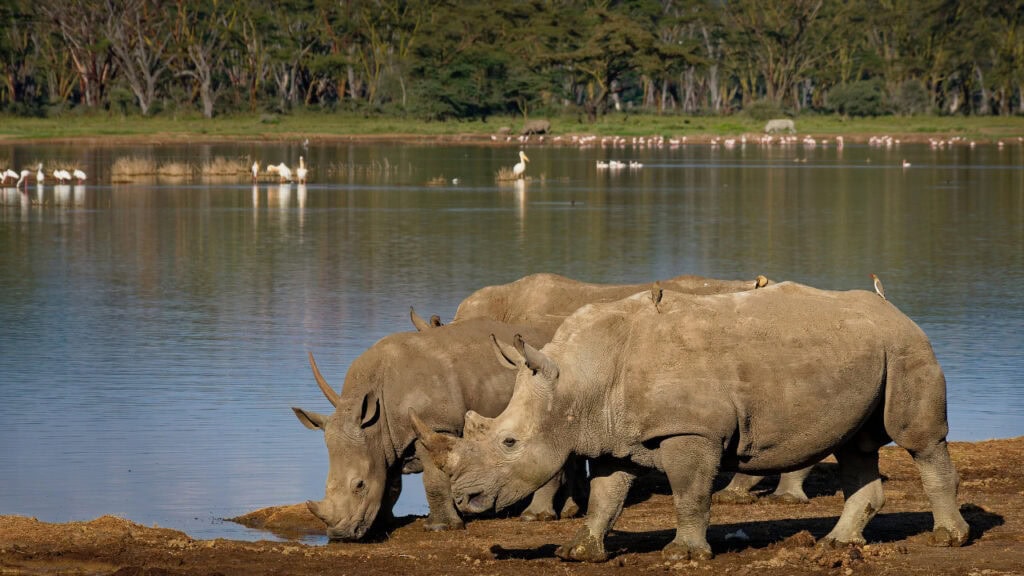
Known for its flamingo populations and diverse ecosystems, Lake Nakuru covers 188 square kilometres and is a paradise for birdwatchers. The park also shelters lions, leopards, Rothschild giraffes, and one of Kenya’s largest rhino sanctuaries.
- Unique Facts: The park is home to over 450 bird species, making it a premier birdwatching destination.
9. Zanzibar, Tanzania
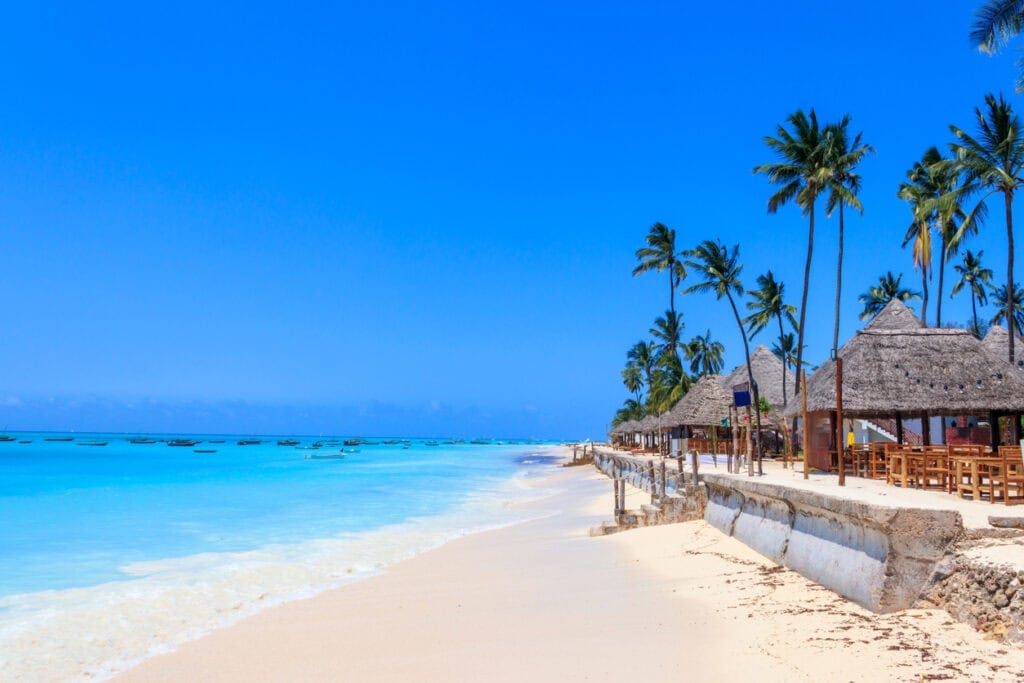
Zanzibar, an archipelago with stunning beaches and rich Swahili culture, offers both relaxation and adventure. Historic Stone Town, a UNESCO World Heritage Site, spans 2.32 square kilometres and is known for its unique blend of African, Arab, Indian, and European influences. The island’s spice plantations produce cloves, nutmeg, cinnamon, and pepper, contributing to its historical significance in the spice trade.
- Unique Facts: Zanzibar’s Stone Town is a UNESCO World Heritage Site, known for its unique blend of African, Arab, Indian, and European influences.
10. Queen Elizabeth National Park, Uganda

This diverse park covers 1,978 square kilometres and features varied landscapes, from savannas to wetlands, and is home to tree-climbing lions in the Ishasha sector, chimpanzees in Kyambura Gorge, and over 600 bird species along the Kazinga Channel.
- Unique Facts: Queen Elizabeth National Park boasts one of the highest biodiversity ratings of any game reserve in the world.
11. Tsavo National Park, Kenya
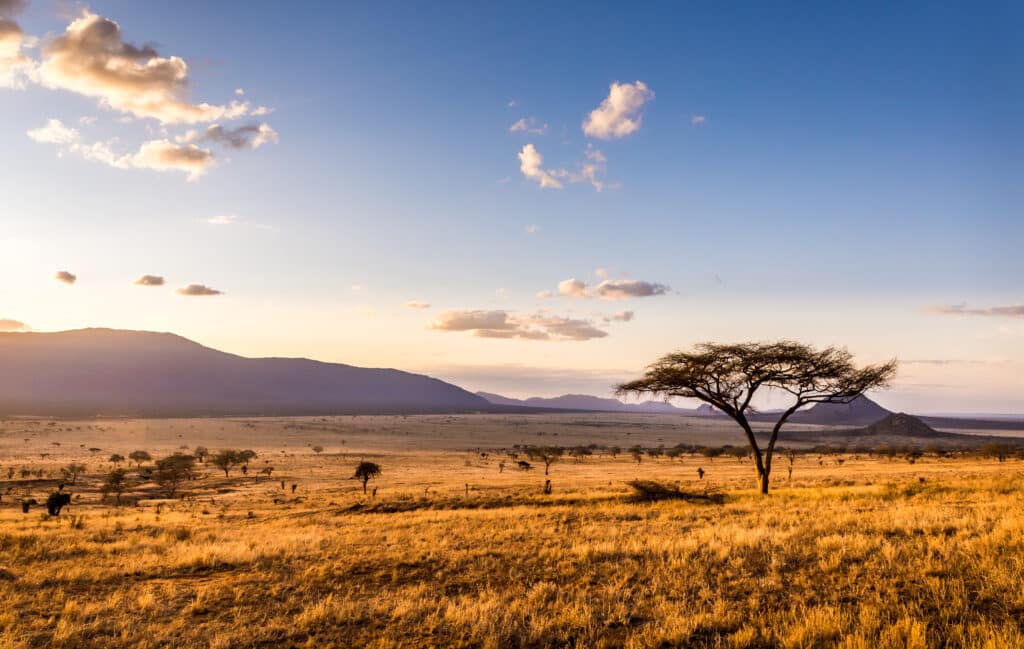
Famous for its red elephants and diverse landscapes, Tsavo is one of Kenya’s oldest and largest parks, covering 21,000 square kilometres. The park’s arid regions host unique species such as the gerenuk and the fringe-eared oryx.
- Unique Facts: Tsavo East and Tsavo West are divided by a railway and are known for their unique red-coloured elephants, which get their colour from the park’s red volcanic soil.
12. Selous Game Reserve, Tanzania

One of Africa’s largest game reserves, Selous spans 50,000 square kilometres and offers an exclusive safari experience with diverse habitats supporting a variety of wildlife, including African wild dogs, lions, and hippos.
- Unique Facts: The Selous is larger than Switzerland and is home to one of the largest populations of African wild dogs.
13. Akagera National Park, Rwanda
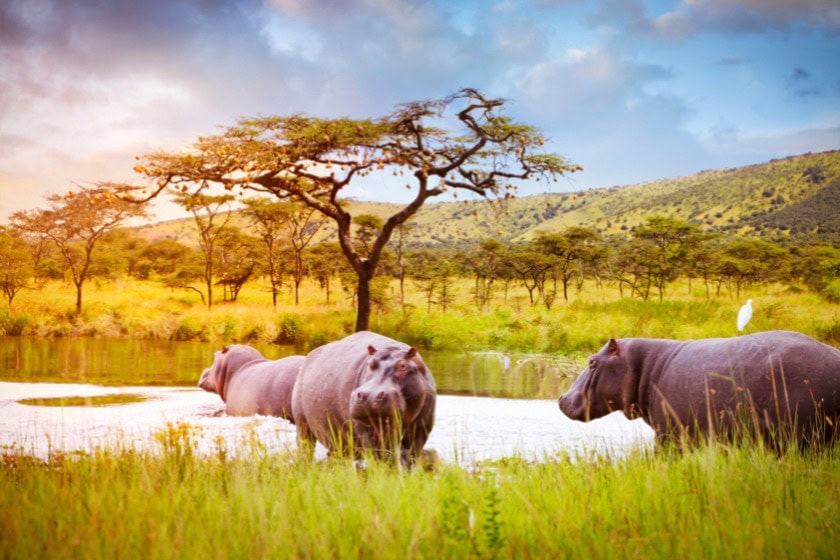
This park is a conservation success story, featuring savannas, wetlands, and lakes. Covering 1,122 square kilometres, Akagera’s varied landscapes provide habitats for elephants, lions, and hippos, with Lake Ihema showcasing abundant birdlife.
- Unique Facts: Akagera has seen the reintroduction of lions and rhinos, making it a Big Five park once again.
14. Tarangire National Park, Tanzania

Known for its large elephant herds and baobab trees, Tarangire covers 2,850 square kilometres and is a lesser-known gem in Tanzania’s northern safari circuit. The Tarangire River attracts a variety of wildlife, especially during the dry season.
- Unique Facts: Tarangire has the highest concentration of elephants in Tanzania and over 550 bird species.
15. Lake Manyara National Park, Tanzania
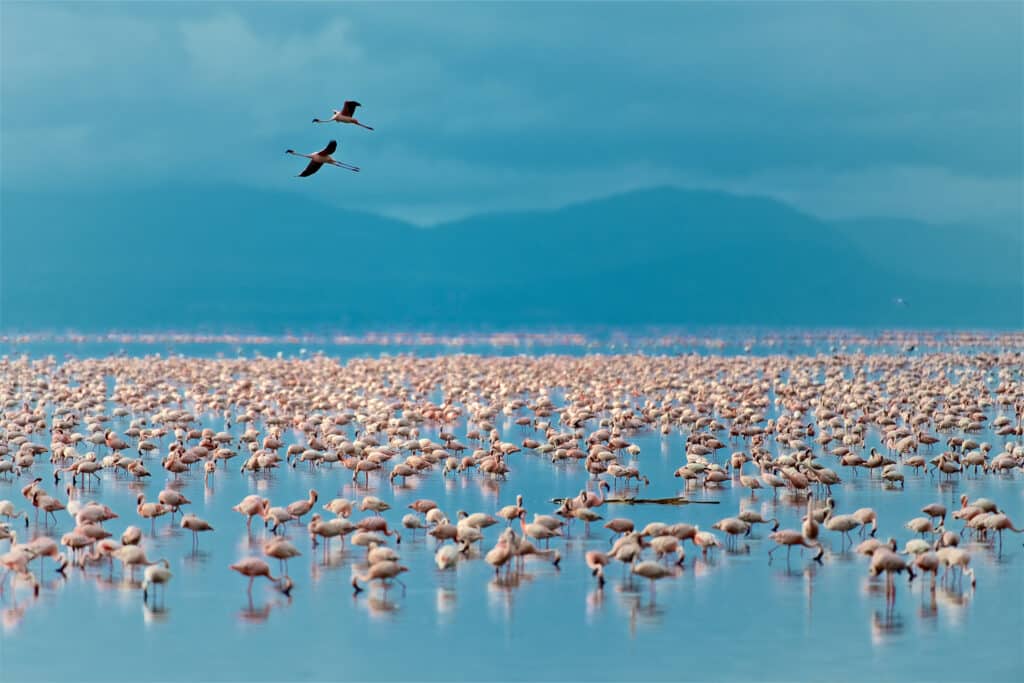
Famous for its tree-climbing lions and diverse habitats, Lake Manyara covers 330 square kilometres and is a birdwatcher’s paradise with thousands of flamingos and other bird species thriving in its lush forests and alkaline soda lakes.
- Unique Facts: The park’s hot springs add a unique element to the diverse ecosystems found here.
16. Murchison Falls National Park, Uganda
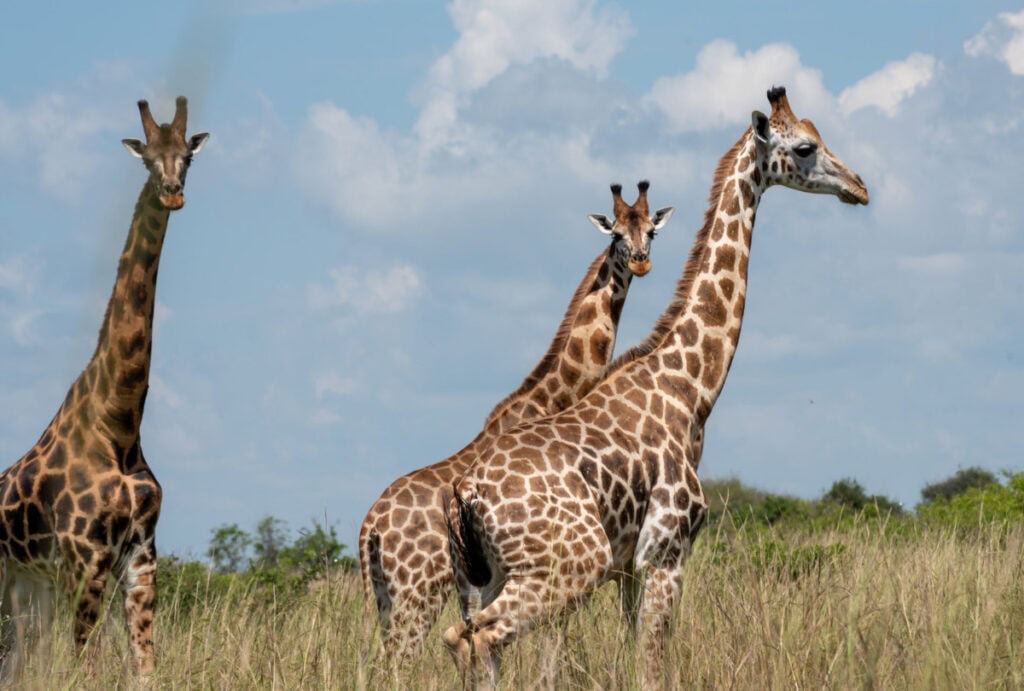
Uganda’s largest and oldest conservation area, Murchison Falls, covers 3,840 square kilometres and is known for the powerful Murchison Falls where the Nile River surges through a narrow gorge. The park is home to a wide range of wildlife, including lions, elephants, and the rare shoebill stork.
- Unique Facts: The falls are named after Sir Roderick Murchison, President of the Royal Geographical Society.
Each of these destinations offers unique experiences and breathtaking landscapes, ensuring an unforgettable adventure in East Africa.